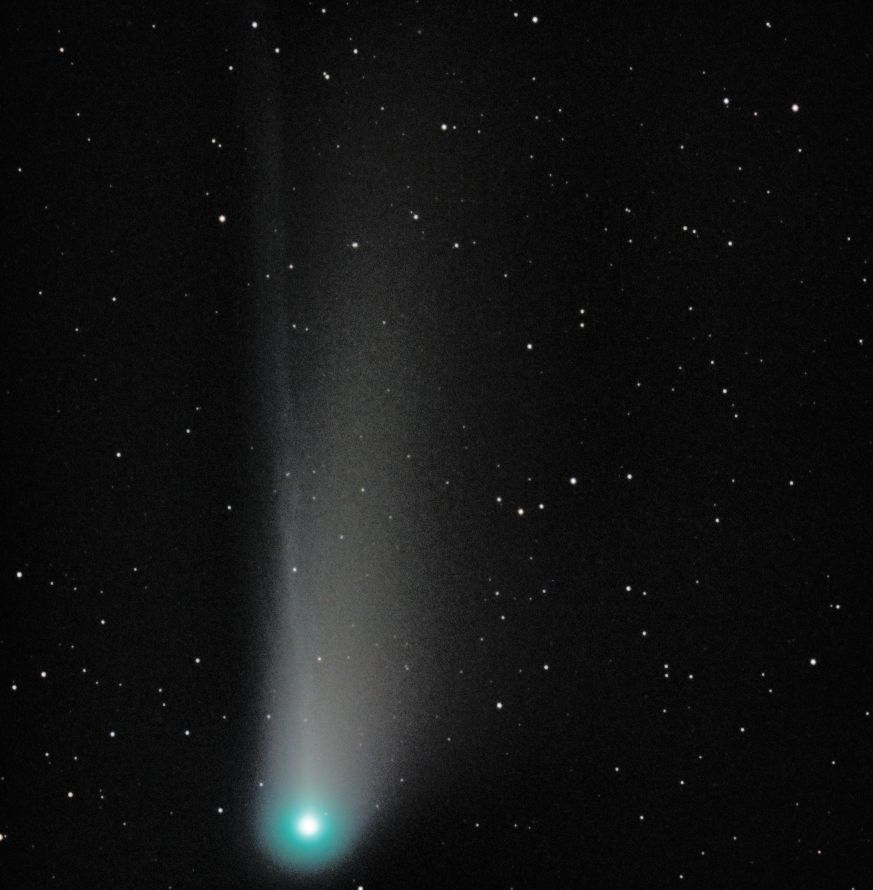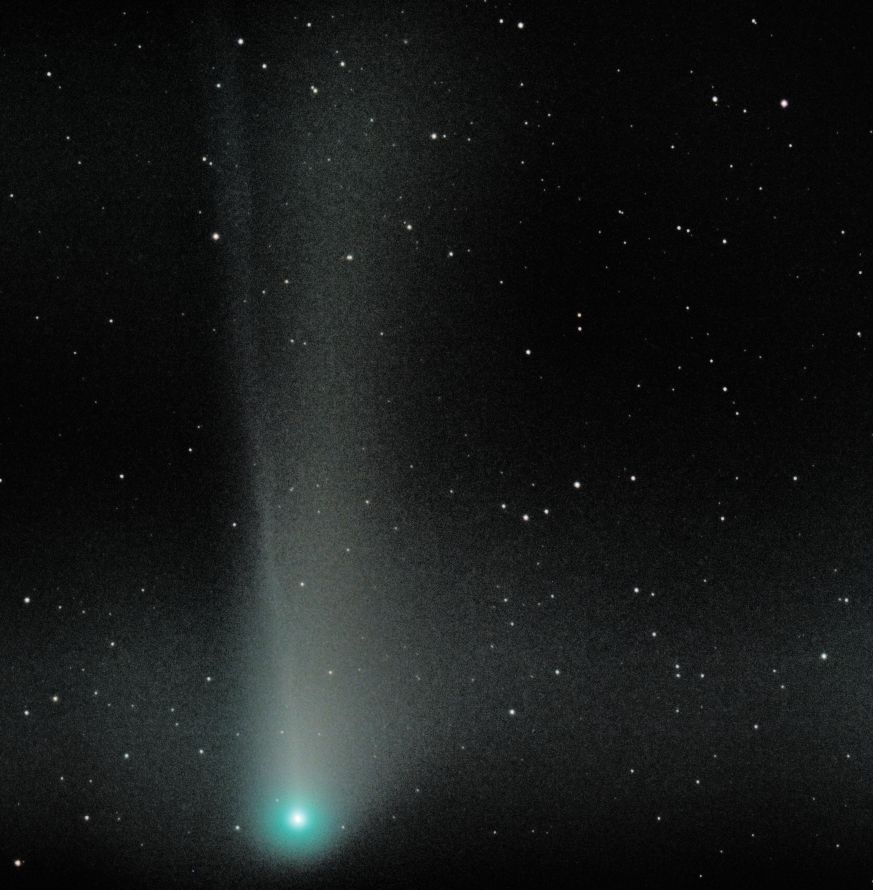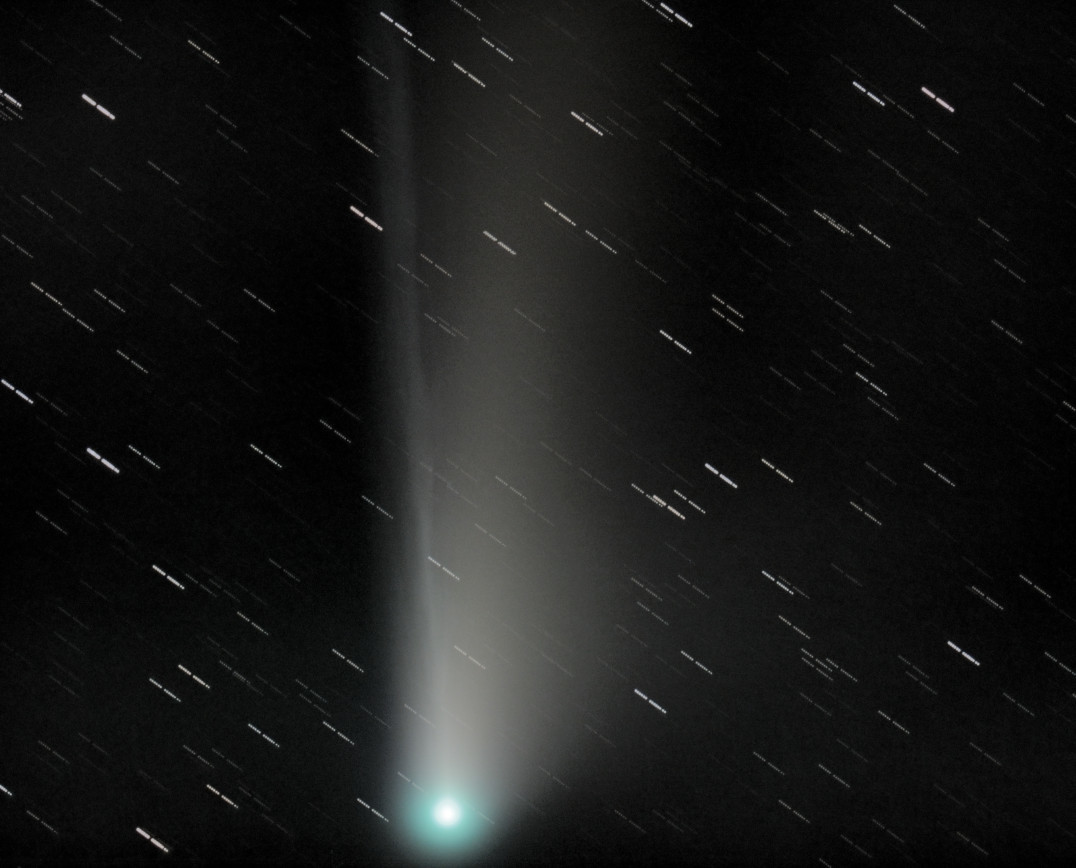Now rapidly moving away from both the sun and the earth, Comet NEOWISE (C/2020 F3) was only discovered on March 27 and turned out to be the brightest comet visible from the northern hemisphere since Comet Hale–Bopp in 1997. A week ago it was easily visible to the naked eye, but it has dimmed greatly since then.
You’ve probably seen published pictures like this example using a wide angle camera showing the comet a week ago.
Finally we had a partially clear (although hazy) sky this past Sunday evening and I was able to take a few telescopic images before the comet set behind the trees to the northwest. Unfortunately the moon phase is brightening, making it more difficult to see dim details.
Since the comet was closest to the earth on July 23, it is still moving rapidly relative to the background stars. The first two images below were taken 15 minutes apart and show how much the comet appears to move. Move the mouse cursor over the image to see the direction and distance of movement in just 15 minutes. Because of the rapid movement, it is not possible to take long exposures without blurring the comet image.
Comet NEOWISE (1 min exposure July 26, 2020)

Comet NEOWISE 15 minutes later (1 min exposure July 26, 2020)

However, it is possible to obtain a longer exposure and show more detail in the comet by stacking multiple short exposures aligned on the coment nucleus instead of the background stars. This causes the background star images to show as trails instead of as points of light.
The last image is a stack of 14 separate 1 minute exposures. You can more easily make out cometary details.
Comet NEOWISE (14 min total exposure July 26, 2020)

The comet nucleus is a dirty snowball of dust and ice, probably about 3 miles in diameter. Way too small to be seen in even the largest telescopes, the nucleus is surrounded by a coma or halo, dust and gas that has been boiled off the nucleus by the heat of the sun.
Finally, like many (but not most) comets, Comet NEOWISE sports two separate tails. The larger and brighter one is formed from dust, tiny fragments boiled off the nucleus. The dust tail is extremely diffuse, taking up a very large amount of area on the sky and an even larger volume in space. It is pushed out by sunlight, but curves as heavier dust particles are better able to resist this light pressure and continue along a solar orbit.
On the other hand, the ion tail is always narrow, irrespective of how far away the comet is from the Sun.